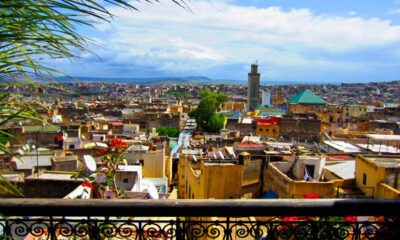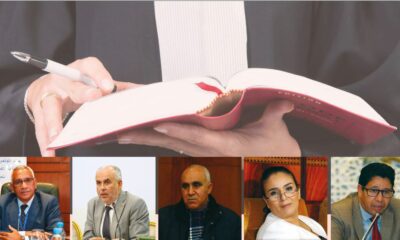Influences
Mocro Maffia, between myth and reality
We imagine a gang of gangsters in suits, sunglasses, and chromed cars, spending their evenings sipping champagne while trafficking drugs in luxurious villas. At least, that’s what many European media outlets want us to believe. The Mocro Maffia is primarily a patchwork of small, disorganized groups. It’s not a mafia, and certainly not a Moroccan mafia.

Over the past few years, the term «Mocro Maffia» has become very widespread in the media, first in the Netherlands, then in Europe, and finally globally. This term refers to criminal networks supposedly led by individuals of Moroccan origin, mainly in the Netherlands, Germany, and Belgium, but also in other European countries.
The name itself, «Mocro», a slang diminutive for «Moroccan», has contributed to this sinister reputation. However, this term and the preconceived notions that accompany it are often far, very far, from reality. What the media call «Mocro Maffia» is actually a broad catch-all for any criminal activity carried out partially or entirely by people of Moroccan origin.
It’s true, there have been high-profile cases, like that of Ridouan Taghi, a sort of Dutch Scarface of Moroccan origin, who made headlines. But summarizing all this as a well-oiled mafia is an easy shortcut, too easy, and at least unfair.
This is confirmed by many specialists, including Toine Spapens, a professor of criminology at the Tilburg University School of Law in the Netherlands, who states bluntly: «What the Dutch media have called the ‘Moroccan mafia’ does not exist. We observe criminal families in which people of Moroccan origin are dominant, but they cooperate with all sorts of criminals from diverse backgrounds».
In summary, these are criminal families working with anyone who wants to, regardless of nationality. Briefly, not really the image of a traditional mafia with iron rules and secret rituals, like the ’Ndrangheta or Cosa Nostra.
Yes, there are some hot-headed individuals trying to imitate Pablo Escobar, and some even succeed for a while. But most are closer to the small-time neighborhood dealer than the big drug baron. Organized networks? Rare. Hierarchies? Nonexistent. It’s mostly resourcefulness, in fact, and with a big R.
A media phenomenon The term «Mocro Maffia» spread quickly after several highly publicized incidents. It was used to describe a series of wars between rival gangs in the drug trafficking world. The media popularized this term, especially after the assassinations of public figures such as investigative journalist Peter R. de Vries or lawyer Derk Wiersum, both linked to investigations into organized crime in the Netherlands.
The cases of bloody vendettas between rival gangs fighting for the cocaine market from Colombia and transiting through European ports, often relayed by the press, have crystallized this image of an «organized, dangerous, and ruthless Moroccan mafia». But behind the sensationalism lies a much more fragmented reality.
Klaus von Lampe, a professor of criminology at the Berlin School of Economics and Law, expresses doubts about the existence of a structure as coherent and organized as the term «Mocro Maffia» suggests.
«There is currently a media hype around the ‘’Mocro Maffia’’ in the Netherlands. I have been following this case through media reports and have also spoken with the police. I have the impression that it is more about drawing hasty conclusions and oversimplifying the complexities of crime and society, thus creating the image of a coherent and homogeneous criminal group that does not exist in reality», he explains.
He questions the idea of an ultra-hierarchical criminal organization, points to the media’s tendency to simplify a complex phenomenon, and concludes: «I see no evidence of the existence or activity of a homogeneous ‘’Mocro Maffia’’ in Germany (or in the Netherlands, for that matter).
What I have heard about this ‘’Mocro Maffia’’ in the Netherlands resembles more a network with a rather small core of people centered around an individual, engaged in relatively simple crimes and lacking self-control leading to violent behavior». That’s indeed what it looks like…
And this opinion is not isolated. According to all the specialists interviewed, what is presented as a mafia is finally just a decentralized network composed of individuals and small opportunistic cells, often competing with each other. These groups cooperate temporarily based on opportunities, but there is no centralized structure or clearly established hierarchy.
Rather young people with problems
Abdessamad Bouabid, an assistant professor of criminology at Erasmus University Rotterdam, explains that these groups do not match the classic definition of gangs or mafias. «In the Netherlands, we talk about ‘’groups of young people with problems’’ rather than gangs, because they are often small groups of friends or large networks of young people with unstructured relationships who know each other on the street», he emphasizes.
And contrary to received ideas, these groups are not territorially defined, and conflicts (or alliances) between them are often opportunistic rather than systematic. Thus, the same Professor Bouabid states: «These groups of young criminals are not structured gangs. They are often bands of friends who have known each other since childhood and who have become involved in illegal activities». Simply put…
This contrasts with the image of a rigorously hierarchical organization, where each member occupies a defined place. In short, imagine a band of «pals» who are a bit lost, hanging out on the street, looking for a plan to make money without worrying about the legality of their actions. That’s what the «Mocro Maffia» is, or at least how it starts.
And sometimes the deals are so good that «it» develops a bit, while respecting the quasi-anarchic parameter of everything. «Well-organized criminal groups are the exception to the rule. They exist mostly on a small scale and have limited potential for stable long-term cooperation», adds Professor Von Lampe.
Moreover, although some very organized networks exist, according to Professor Bouabid, they are far from representing the majority of groups involved in crime.
Most young members of these networks come from disadvantaged neighborhoods, where unemployment and poverty are constant realities. In Germany, for example, these groups are also present, but their organization is just as decentralized.
Mahmoud Jaraba, a researcher at the Center for Islamic and Legal Studies in Europe at the University of Erlangen-Nuremberg in Germany, explains that «these young Moroccans usually come from marginalized environments, often second or third-generation immigrants who struggle to integrate into German society.
They face socioeconomic challenges, such as a lack of education and job opportunities, which makes them vulnerable to recruitment into criminal networks».
These young people often become involved in criminal activities out of economic necessity and lack of alternatives. For them, joining a criminal network is a way to quickly gain financial benefits, but also a form of social recognition.
The main motivation is often the promise of quick financial success, which is particularly attractive to those who feel they have few or no legitimate career prospects. Many of these individuals come from disadvantaged backgrounds, where access to education and employment is minimal, and they are often excluded from society.
This feeling of marginalization, combined with the desire for social advancement, leads them to consider a criminal career as one of the few possible ways to access a better life», Jaraba notes. These young people evolve in environments where discrimination and marginalization are omnipresent, and crime becomes… an escape.
Welcome to the familia!
Moreover, “in addition to financial benefits, gangs provide young people with a sense of identity and belonging that other groups cannot offer elsewhere. For many recruits, the gang functions as a substitute ‘family,’ offering protection, company, and social structure that gives them a place in the world.
This sense of loyalty and brotherhood is reinforced by shared experiences, particularly the pleasure of operating outside social norms,” adds Jaraba. The same arguments are found in Professor Bouabid: « As these young people fail to succeed in education and work, two crucial areas in Dutch society, they tend to spend a lot of time on the streets of disadvantaged neighborhoods where they live.
There, they form close bonds with other marginalized young people seeking recognition, solidarity, and a sense of belonging, and find alternative forms of honor and respect, as well as financial rewards that ensure them a social status they cannot achieve through conventional means.
This need for status, respect, and inclusion makes them more vulnerable to engaging in criminal activities or joining gangs, where these needs are quickly met».
A mythified organization
The Mocro Maffia, as it is often depicted in the media, is largely an exaggerated and simplified construction. There is no centralized and organized Moroccan mafia, but rather a mosaic of decentralized criminal networks, where ethnic origin is one factor among others.
These networks are primarily the product of difficult social contexts, where marginalization and poverty play a key role. The origins do not matter… Indeed, the origins of members of criminal organizations that control parts of the drug trade, particularly cocaine, are very diverse.
Alongside Moroccans, you find Dutch, Serbs, Albanians, Italians, and even groups from Latin America. The cooperation between these different groups is explained by common interests, mainly financial, and flexibility in organization.
Unlike traditional mafias, such as the Italian Cosa Nostra or Mexican cartels, the Mocro Maffia does not rely on any rigid structure. And therefore does not really exist as such. Or rather, not as a true Mocro Maffia.
The Moroccan origin: An unjustified stigma
One of the most persistent myths surrounding the Mocro Maffia is that it is intrinsically linked to Moroccan culture. This idea, widely spread by certain political and media discourses, is based on racist prejudices. Since the 1980s, simplistic theories have sought to associate the criminality of young people of Moroccan origin with supposedly criminogenic values from their culture.
Professor Abdessamad Bouabid denounces these theses as discriminatory: «They claim that certain norms and values of Moroccan culture are criminogenic, which gives the impression that there is something inherently criminal about Moroccans». These explanations have been largely refuted by researchers, but they continue to circulate in certain circles.
This reductive vision also ignores the fact that the criminality linked to the Mocro Maffia is not limited to individuals of Moroccan origin. Frank Van Gemert, assistant professor of criminology at Vrije University Amsterdam, recalls that in certain neighborhoods, many young Moroccans are active in crime, but the connections they maintain with others are unstable and the symbols indicating a shared identity (Moroccan!) are absent».
For him, there is no Moroccan mafia or Moroccan gangs, for that matter. It is therefore socioeconomic factors, rather than cultural ones, that explain the involvement of these young people in criminal activities.













